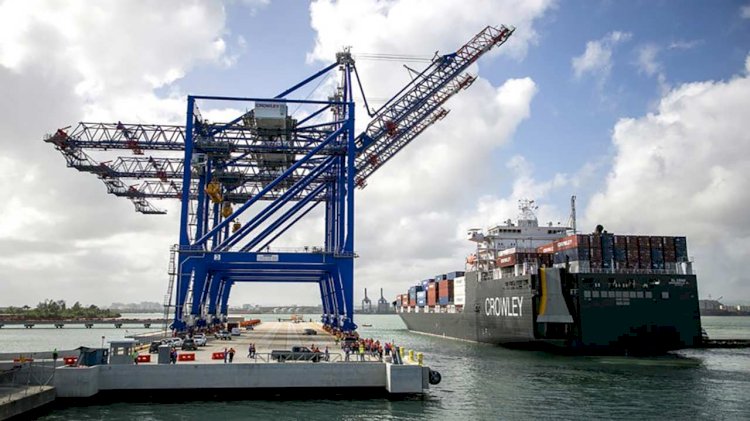Terminal technology helps Crowley adapt to need for speed
Crowley wanted to avoid the traps that coming with customizing terminal operating software so it adjusted its operations to fit Tideworks

A change in the terminal operating system (TOS) used by Crowley Maritime Corp has sped up truck turn times and allowed for better use of limited yard space within its three hubs in Florida and Puerto Rico. The shift is part of a decade-long operational change that’s paying dividends for the liner carrier and supply chain services provider.
An investment in off-the-shelf TOS software from Tideworks Technology helped to better align operations at Crowley’s key terminals from roll-on roll-off (ro-ro) vessels to lift-on lift-off (lo-lo).
The 10-year lag between Jacksonville-based Crowley making a shift in its physical operations model and the systems to support that shift underscores the need for third-party software to connect disparate supply chain activities and the role that terminal operators can play in aiding shippers, company executives told JOC.com.
Patrick Collins, Crowley’s vice president of terminal operations, told JOC.com, said:
“Our whole system was set up for a ro-ro model. Even though our vessels went to lo-lo, our terminals remained wheeled. We needed to move to a grounded terminal operation. And in order to go grounded, we needed a different system.”
Crowley had, until 2015, been using a homegrown TOS designed in the early 1980s that integrated with its homegrown container booking system.
Collins said:
“It was perfect for our operation, but we had outgrown it.”
That year, the company looked for an off-the-shelf solution instead of building something in-house again, and went with a TOS from Tideworks. The decision to go with off-the-shelf software at its hub terminals in Port Everglades, Jacksonville, and San Juan, Puerto Rico was driven in part by wanting a new perspective on its operations, but also to get more ongoing value from its investment in technology, Collins said.
Mike Porkert, Crowley’s director of terminal systems, said:
“Many of the processes and operations at any of our three Crowley terminals were maintained informally through post-it notes, tradition or just sticking with what worked before. Tideworks’ technology helped create structure and organization to our processes. Usually there’s a lot of apprehension from the business unit about a new system and it’s easy to want to customize things, but we really wanted to adopt the system.”
Crowley first implemented the TOS at Port Everglades in 2016, then expanded it to Jacksonville and San Juan in 2017. Use of the standardized lo-lo-oriented TOS has resulted in an increase in gate volume and turn time reduction at all three facilities, Collins said. In Jacksonville, average turn time in the terminal has been cut by 37 percent, around 14 minutes, since Tideworks was implemented. In San Juan, in-gate times fell from an average of 45 minutes to 12 minutes. Time spent at gate kiosks at the Isla Grande terminal in San Juan went from an average of seven minutes to less than one minute.
Using the Tideworks TOS has created a shift in mentality at Crowley on the importance of data at the terminal level, since downstream, outside-the-terminal processes rely on the quality of that data.
Porkert said:
“Beforehand, if there was a data quality issue, the idea was ‘it’s okay, just make a phone call to correct it. This has created a shift in thinking, because if you put bad data in the TOS, it affects outgate and cargo availability. There was resistance off the bat, but within a few days, you couldn’t pry the computer out of their hand, as opposed to the paper and clipboard they used to use.”


























